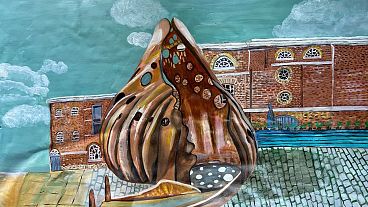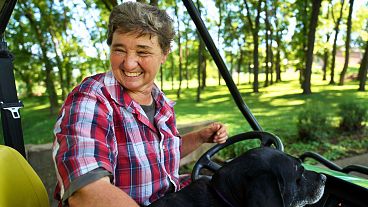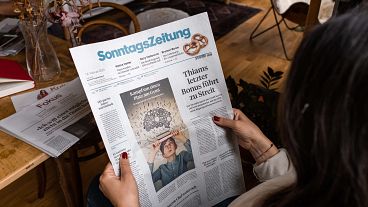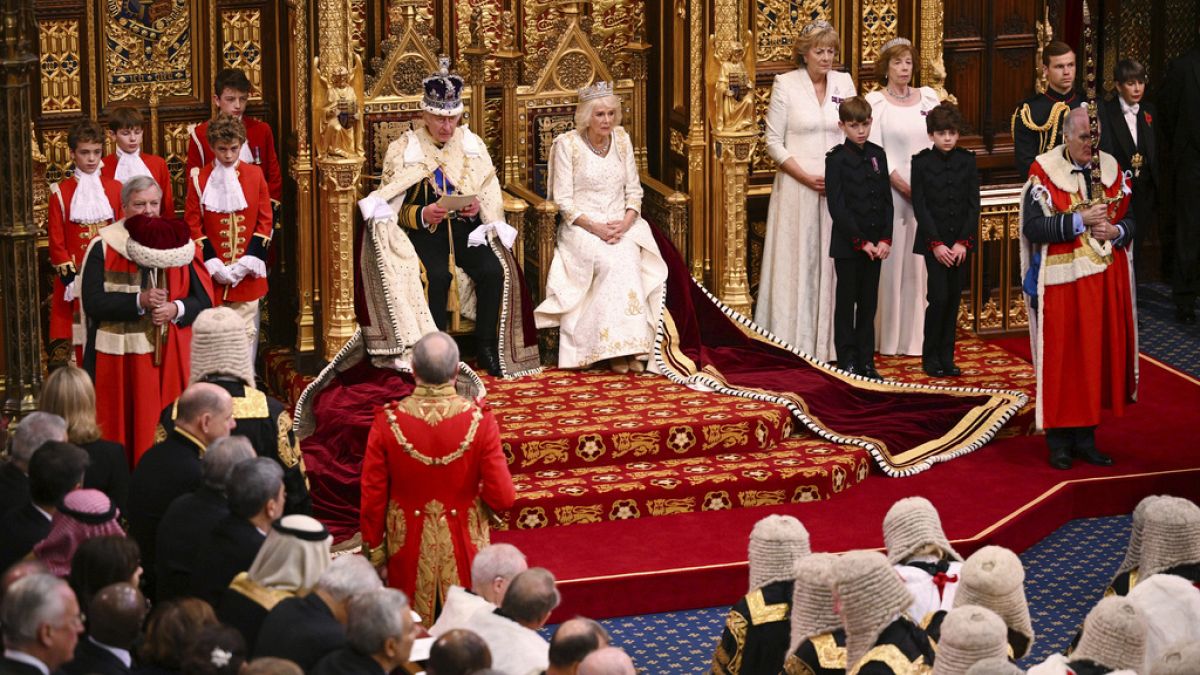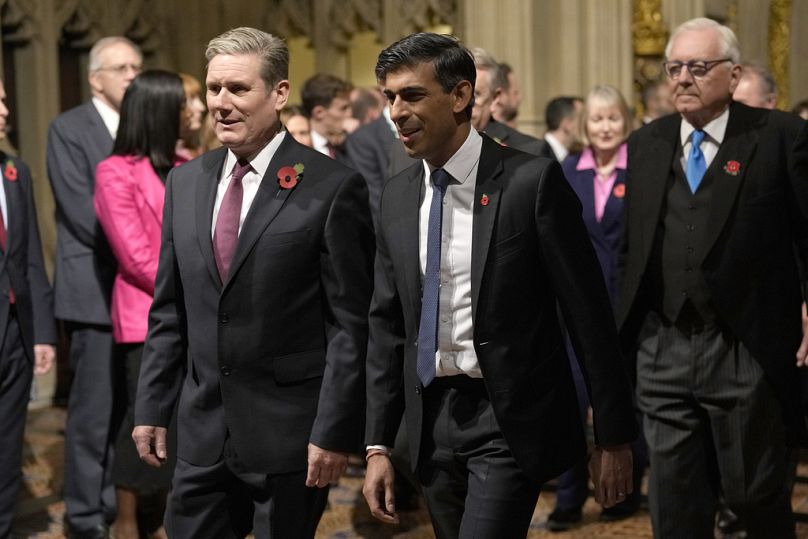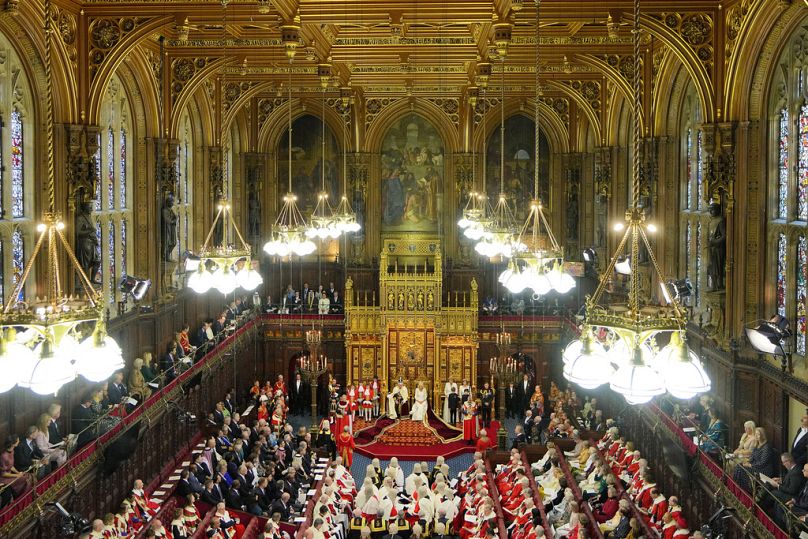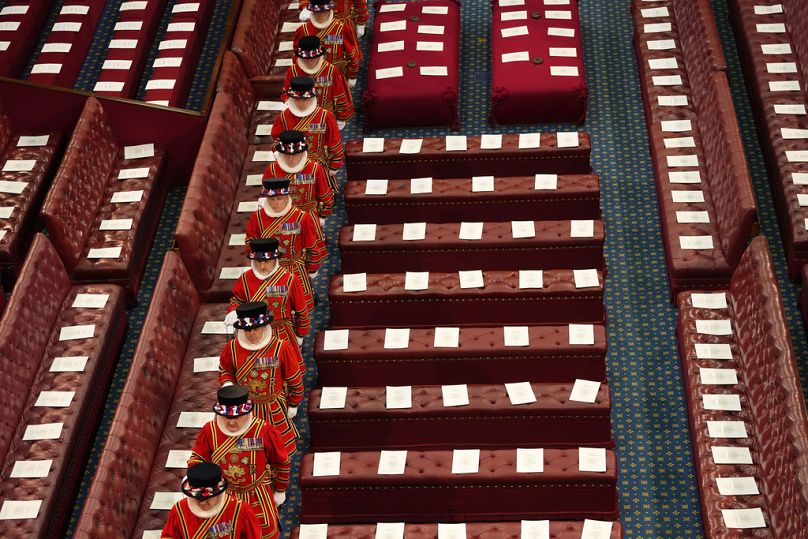Donning his ceremonial robes and the crown of state, King Charles III will lay out the legislative program of the UK's first left-leaning government in 14 years, which will include more than 35 bills.
Britain's King Charles III will officially open the new session of Parliament on Wednesday, an occasion where royal pomp meets hard-nosed politics.
Wearing a diamond-studded crown, the monarch will sit on a gilded throne and announce the government’s legislative agenda for the year.
The King’s Speech is the centrepiece of the State Opening of Parliament.
It's also an occasion for Prime Minister Keir Starmer to show how he aims to deliver his campaign promise to bring bold change at a modest cost.
Starmer said the measures announced in the speech would “take the brakes off Britain” and “create wealth for people up and down the country” by spurring economic growth.
He promised it would be a “down payment on our plans for the next five years,” which centred on getting the UK's stuttering economy to grow strongly.
Labour won a landslide election victory on 4 July as voters turned on the Conservatives after years of high inflation, ethics scandals and a revolving door of prime ministers.
Over 35 bills to be announced
The government said Wednesday’s speech will include more than 35 bills – the Conservatives’ last speech had just 21 – ranging from housebuilding to nationalizing Britain’s railways and decarbonizing the nation’s power supply with a publicly owned green energy firm.
Starmer has promised to patch up the country’s ageing infrastructure and frayed public services but says he won’t raise personal taxes and insists change must be bound by “unbreakable fiscal rules.”
There will be moves to give more powers to local government and a law to ensure all government budgets get advance independent scrutiny.
Smoking, lords and border security on the to-do
Also expected are new measures to strengthen border security, following on from Starmer’s decision to scrap the Conservatives’ plan to send people arriving in the UK across the English Channel on a one-way trip to Rwanda.
A law regulating the development of artificial intelligence is also expected, and the government may also announce significant changes to the UK's political system, including lowering the voting age from 18 to 16, one of Labour’s election promises.
It might even tackle reforming the House of Lords. The unelected upper chamber of Parliament is packed with almost 800 members – largely lifetime political appointees, with a smattering of judges, bishops and hereditary aristocrats. Starmer has said he would like to remove the hereditary nobles and set a lords retirement age of 80.
While much of Starmer’s agenda marks a break with the defeated Conservative government of former Prime Minister Rishi Sunak, Starmer may revive Sunak’s plan to stop future generations from smoking by gradually raising the minimum age for buying tobacco.
What is the King's Speech?
The speech is written by the elected government and delivered by the king during a joint session of the House of Lords and the House of Commons.
The event is a symbol of the monarch’s constitutional role as head of state and is accompanied by centuries of tradition. It is the only routine occasion during which both houses of Parliament and the Crown come together in the same place.
This year’s state opening of Parliament marks the first sitting of the House of Commons following the 4 July general election in which Starmer’s Labour Party won an overwhelming victory.
Britain and the royals know how to put on a show. The King’s Speech dates back to at least the 15th century, and the traditions highlight that history.
The event gets underway at 9:30 local time when the Yeomen of the Guard — a group of ceremonial bodyguards who still wear traditional red and gold uniforms from the Tudor period — search the cellars beneath the Houses of Parliament for explosives.
The tradition is a reminder of the 1605 Gunpowder Plot in which Roman Catholic rebels led by Guy Fawkes tried to kill Protestant King James I by blowing up the building during the State Opening of Parliament.
The public show starts later in the morning when the Household Cavalry Mounted Regiment leads a procession from Buckingham Palace to the Houses of Parliament. King Charles III will travel in the Irish State Coach, an ornate, enclosed carriage drawn by four horses that was first used by Queen Victoria in 1852. A separate coach carrying the Imperial State Crown, the Cap of Maintenance and the Sword of State precedes the monarch.
Meanwhile, a lawmaker goes to the palace as a symbolic hostage to ensure the king’s safe return. The tradition dates back to King Charles I’s effort to arrest lawmakers in 1642 as he tried to assert his right to govern without the advice and consent of Parliament. Charles I was ultimately tried for treason and beheaded.
Ever since then, the monarch has been barred from entering the House of Commons. That is why the opening ceremony takes place in the House of Lords, Parliament’s unelected upper chamber.
The Lords will send a security official, with the colourful title of Black Rod, to the Commons to summon members to the joint sitting. But lawmakers traditionally slam the door in Black Rod’s face to symbolize their independence.
Only after Black Rod pounds on the door with staff will lawmakers make their way to the House of Lords, purposefully taking their time to once again show that the elected households the real power. Upon arrival, they pile into the back of a chamber packed with lords in ermine-trimmed scarlet robes.
The king traditionally delivers his speech from a golden throne while wearing the Robe of State and the diamond-encrusted Imperial State Crown.
This will be the third speech Charles has delivered, and his second as king.
In 2022, the late Queen Elizabeth II delegated this critical duty to Charles. The move was seen as evidence that a transition was underway, with the 96-year-old monarch remaining on the throne but turning over more responsibilities to her eldest son.
What does it all mean?
Charles is the head of state, but he is constitutionally obliged to follow the government’s advice. As such, he will likely be inscrutable in his reading of the speech, offering no clue as to whether he approves of the policies he announces on behalf of “my government.”
Likewise, members of both houses of Parliament are expected to listen to the speech in silence — unusual indeed for the House of Commons, where political debate is often raucous and irreverent.
All the pomp and circumstance are there to highlight the turning points in British history.
What matters is the reference to Charles I, which cements the road to Britain becoming a constitutional monarchy, showcasing that neither the monarch nor anyone else can march into Parliament and demand whatever they want
Beyond that, there’s something for every branch of the British government. The “genius’’ of the ceremony is its ability to have something for everyone — the lords, the lawmakers and the crown, said anthropologist Emma Crewe of SOAS University of London, who has studied Parliament.
"It reminds us that it’s been around for a very long time, and we should protect it. And we should get involved.''

